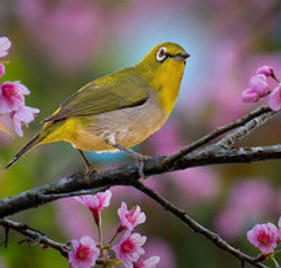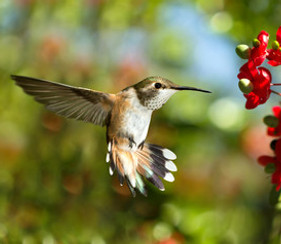
The Long Term Dangers of Killing Off Pollinators such as Bees, Birds, and Bats
In addition to the massive bee die-off reported recently, news of mass bat deaths is just starting to make headlines. As with pollinating bees, the loss of bats could be an environmental catastrophe, as they are the world‘s greatest insect-eaters devouring up to half their weight in insects every day. The loss of bats is now at the point where researchers are expressing fear that extinction is underway. Pesticides, either due to the toxins themselves or because they’ve killed off the bats’ major food sources, mosquitoes, and other insects.
Bat die-off could have a major impact on humanity, including outbreaks of mosquitoes (and their related diseases like West Nile Fever, malaria, and Eastern Equine Encephalitis, Zika) and destruction of crops (which could be overtaken by crop-destructive insects). Another victim of this deadly fall-out is pollinating birds, who, similarly to bats, also devour mosquitoes, even blood-laden females, but do not transmit viruses. The blood-seeking female hunts for human and animal blood, unlike the male, so she is exposed to insect-eaters far more than non-biting males.
From April 2015 to May 2016, 44% of pollinating beehives in the United States collapsed, meaning the hive is destroyed. It is believed this is due to a fungus that envelopes and kills bees caused by industrial and common household weedkillers! This represents billions of dollars lost in revenue to our economy; we need bees to grow food crops. Almonds, for example, are 100% dependent on bees; No bees, no almonds...and that's just the tip of the iceberg.
Three of the world’s greatest pollinators -- the creatures that are actually responsible for spreading pollen so plants can grow -- are slowly disappearing right before your eyes. First, it was the bees. Then the birds. Now the bats.
Bats are Necessary for Crops to Thrive
In reality, bats are a great friend to the environment, helping to pollinate wild plants, disperse fruit seeds, and keep insect populations under control.
Bats are also used strategically by organic farmers as a natural means for pest control, as one small bat can eat up to 2,000 mosquitoes in one night. So you can imagine how mosquitoes and other bugs will multiply without bats to keep them in check.
Other Pollinators are Also Disappearing
And as of April 2007, 25 percent of all bee colonies in 27 U.S. states had died. The growing absence of these necessary creatures is signaling a silent alarm bell about the state of our ecosystem. Even the U.S. Department of Agriculture is calling it an “impending pollination crisis.”
The onslaught of toxins being used to destroy Zika virus-carrying mosquitoes are now permanently in our environment; the side effects will take generations to understand and treat. This short-term solution to a long-term problem demands better, more Earth-friendly solutions before the damage is irreversible; the economy of each affected country may depend on this one factor; pollinators to continue food production.
Can Life Go on Without the Birds, the Bees, and the Bats?
Not for long! One-third of the World's food supply is dependent on the pollination from bees alone. Without pollinators, the food supply as you know it will be long gone.






